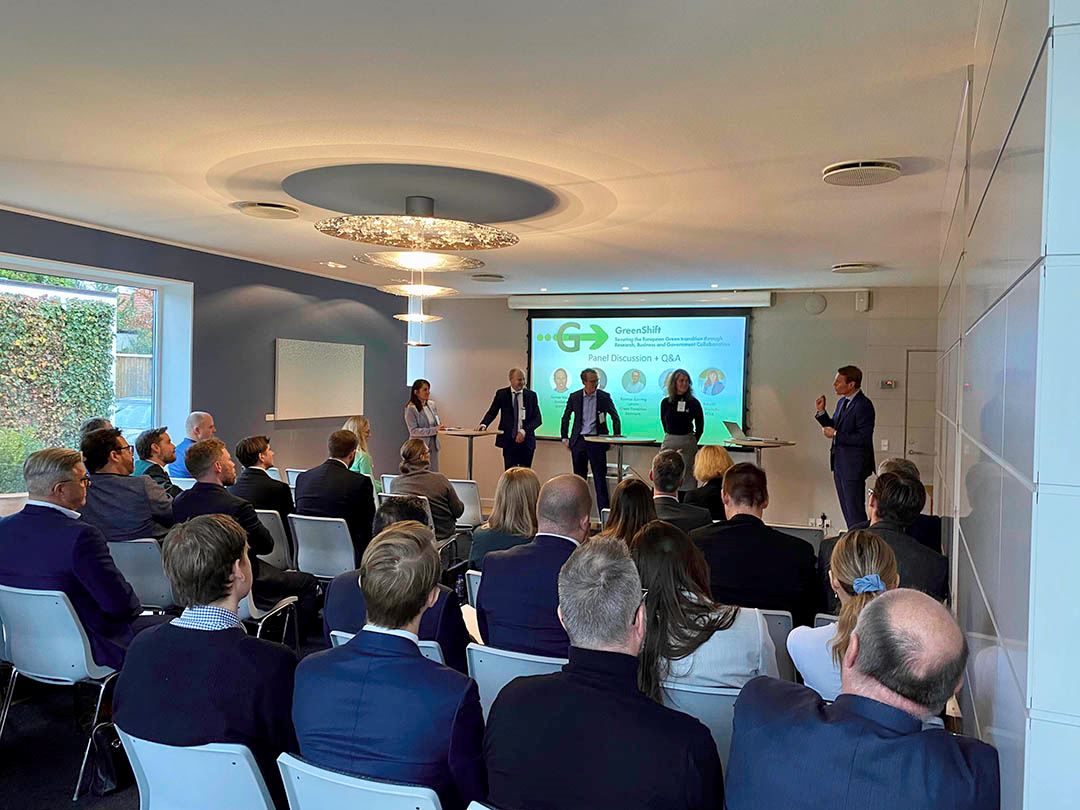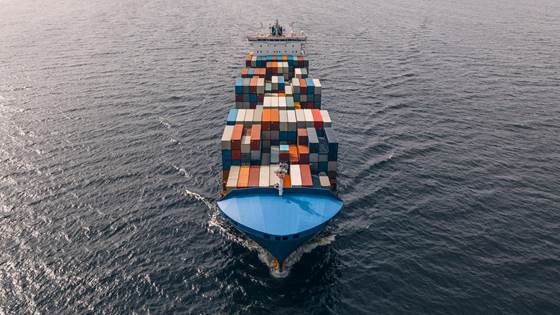The Norwegian embassy in Copenhagen and SINTEF Ocean put decarbonization of deep sea shipping on the agenda in Copenhagen 23 November 2023. 20 speakers were invited to talk in four sessions, followed by an engaged Q&A and discussion. Ambassador Katja Nordgaard opened by highlighting the importance of shipping for Norway, Denmark and all countries around the North Sea and beyond.
The big picture
"A wholistic approach is necessary to succeed", said Project Manager at
SINTEF Ocean, Gunnar Malm Gamlem in his opening address, and added "many different measures within operations/logistics, energy use and alternative fuels will be needed to decarbonize shipping". He encouraged everyone to evaluate all measures by both their potential and their lead time, noting the urgency of the climate crisis.
Gunnar Malm Gamlem's presentation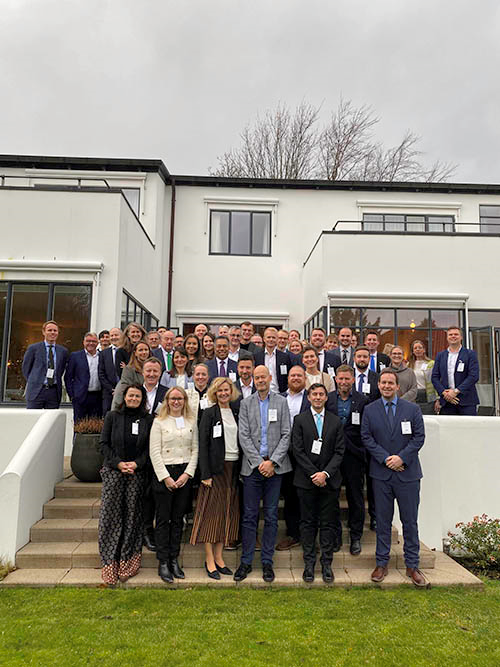
Participants from academia, industry and government were present at the conference.
Sveinung Oftedal, chair of the IMO working group on greenhouse gases and specialist director at the Norwegian Ministry of climate and environment, illustrated the large variation in interests and initial positions when the deliberations in June 2023 began. From this difficult starting point, 175 nations managed to agree on a revised strategy. "Reaching a consensus decision at IMO is critical to motivate all parties to turn the agreed goals into concrete regulations", said Oftedal.
"The revised strategy is a major step forward", agreed Rasmus Bjerring Larsen from the Danish NGO Green Transition Denmark (RGO), but noted that it is not leading to 1.5°C. High carbon prices are necessary, in line with the polluter pays principle, supported by all speakers in the first session.
"Be part of the future", said Pernille Dahlgaard, chief officer for government, business and analytics at Mærsk Mc-Kinney Møller Center for Zero Carbon Shipping and called for systemic transformations that require collaboration across value chains and industries.
Collaboration
Collaboration is essential to achieve the IMO goals as the decarbonization of a single ship requires support from the cargo owner (charterer), the bank and by legal agreements.
Sophie Deyon (Global Maritime Forum) explained that the sea Cargo Charter builds on the idea that transparency around carbon intensity will lead charterers to contract the greenest vessels.
"Long contracts and partnerships are the best way to make green ships bankable", advised Daniel Brenden (Danske bank). Just in time arrival can reduce shipping emissions by 20% of maritime emissions by better collaboration between cargo owner, port and vessel, said Mads Watcher Kjærsgaard (BIMCO).
Samskip is moving first: Steel for their first hydrogen container ship is cut at Cochin shipyard in 1Q 2024. The concept relies on support from Oslo and Rotterdam port but also from customers, and Magnus Salberg Óskarsson (Samskip) told that the design process started by minimizing energy consumption because new fuels are expensive, and some customers cannot accept anything but the lowest price. Technology and economy must go hand in hand. Magnus also showed the climate effect of moving cargo from truck to sea can be 55-65%, but that the convenience of the truck is a major challenge.
New vessels need new fuels. Green corridors is a concept where fuel supply is carefully planned where it is most needed to maximise the utilization at minimum costs. Pernille Dahlgaard presented a case for the Baltic and North sea.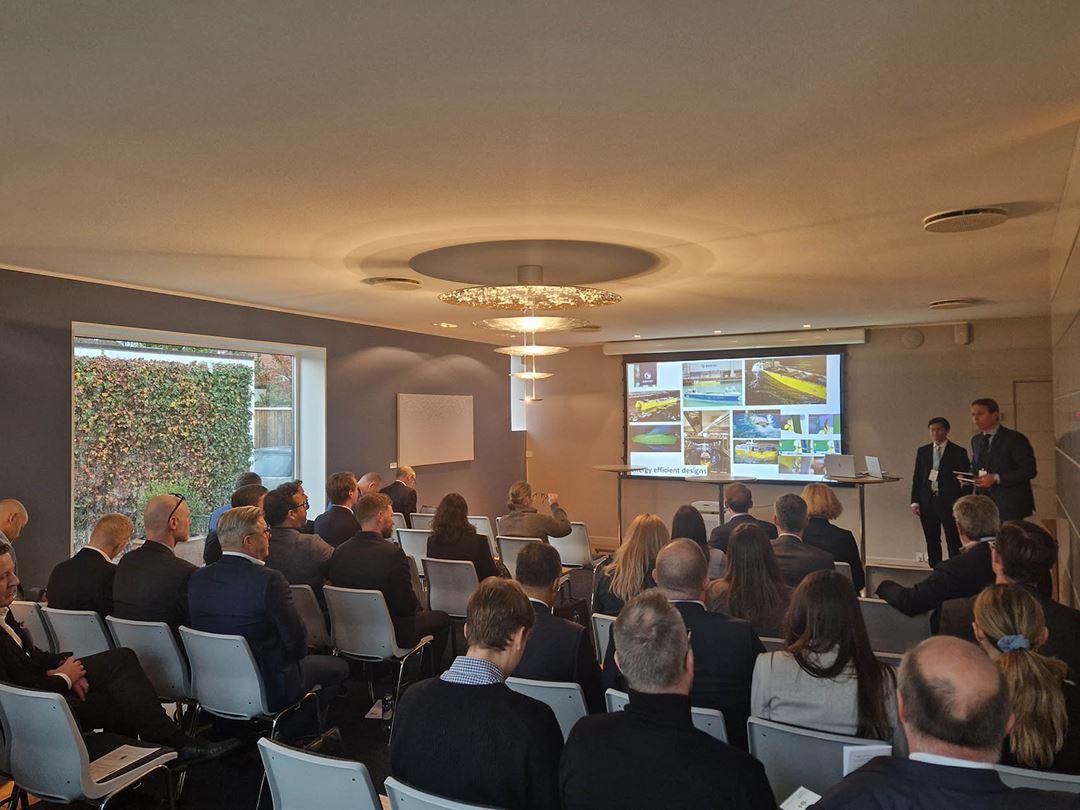
SINTEF Ocean arranged the conference in close collaboration with the Royal Norwegian Embassy in Copenhagen. Standing in front is Research Manager Anders Alterskjær and Project Manager Gunnar Malm Gamlem.
Energy efficiency
"Look for novelty", said Anders Alterskjær, and added that even shoebox-like hulls can be improved by digital tools, simulation tools and model testing.
Tor Østervold from Ecosubsea noted that hull cleaning cuts fuel consumption (and cost and emissions!) by 10% and that this is available now! Removing fouling reduces not only fuel consumption and cost and emissions but also avoids invasive species from reaching new habitats. Hull cleaning also enables less toxic coatings and the debris is collected and turned into biogas or heat.
Batteries are commonly considered an energy carrier and purposeful only in small ships with low energy demand. But batteries can help very large ships by facilitating optimal engine load and improving the thermal efficiency of heir gensets, said Syb ten Cate Hoedemaker (Maritime Battery Forum).
Alternative fuels
Moving thousands of tonnes of steel and cargo will always require energy. Nicolas Campion (DTU) tried to answer the impossible question of which fuel should shipping use? From his forthcoming PhD, the complicated answer is that all fuels have their pros and cons and that the answer depends on a number of factors. Yet, trying to conclude, all fuels should be used in the beginning, ammonia is a good bet in the long run and LPG deserves more scrutiny.
Christina Fløche Juelsgaard from Ballard, ABC Engines and MAN told the audience that fuel cells and engines for methanol and hydrogen are available today and variants for ammonia under development. Fuel cells on hydrogen are completely emission free, said Christina Fløche Juelsgaard, and large enough for many smaller vessels. Combustion engines are building on known technology. International shipping is diverse and thus, both technologies are needed and suitable for different applications.
Maarten Sickler (Conoship) illustrated the concept of adaptive engine rooms to prepare today's ship designs for tomorrow's fuels and machinery. Gijs Streppel told how Meyer Werft's view on climate neutral operations have developed and that fuel cells, batteries and renewable fuels are the corner stones in future cruise vessels.
Last speaker out, Sigurd Jenssen (Wärtsilä Moss), said 70-80% of CO2 can be captured from the funnel and that the technology will be piloted next year to demonstrate its viability under realistic conditions. This extends the range of options.
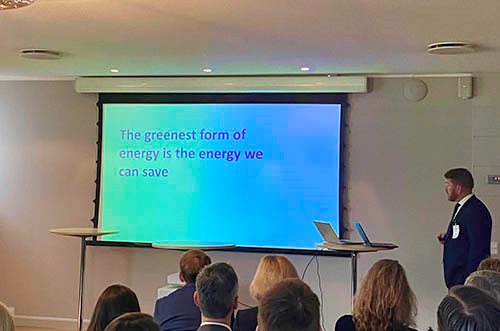
Ambassador Nordgaard, Pernille Dahlgaard and Gunnar Malm Gamlem summed up the summit:
"We have seen lots of examples of what's possible, both projects and pilots and real ship cases", said Pernille Dahlgaard and added that regulations and investments to motivate scaling up are still missing.
Ambassador Nordgaard appreciated the energy in the room and the diversity among the participants. "This is important because all actors along the value chain must come together to find solutions." Government regulations and incentives are still needed."
Gunnar Malm Gamlem quoted some of the speakers in his summary: "Seek novel concepts when developing new hull forms and move from shoebox to canoe. Both a high carbon price and clear technology neutral regulations are needed. Long contracts is perhaps the most realistic way to ensure financing."
Summary conversation between ambassador Nordgaard and Gunnar Gamlem.
